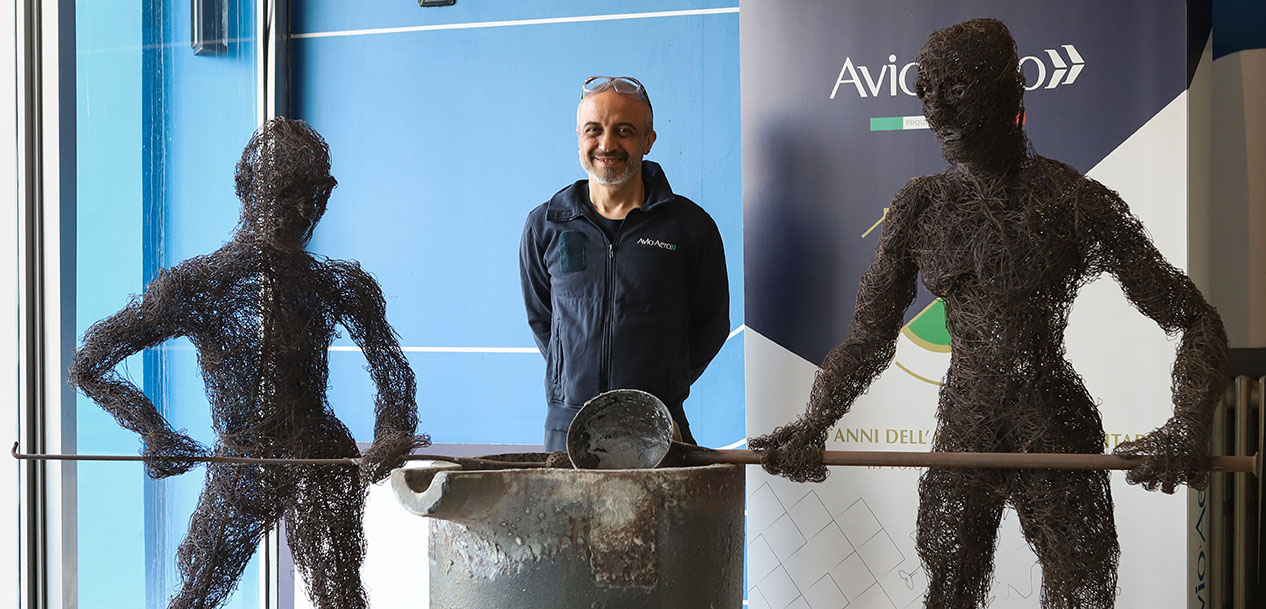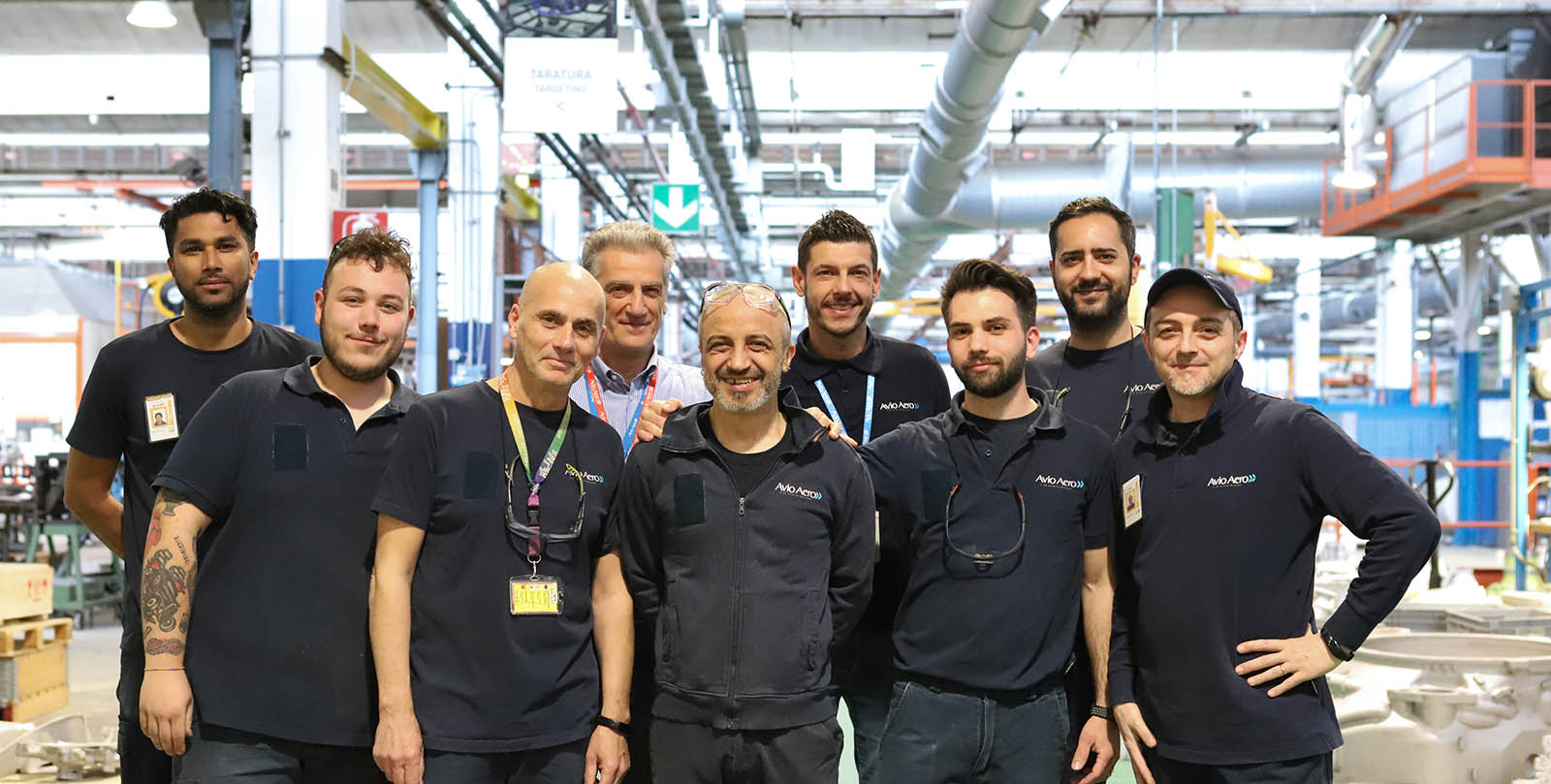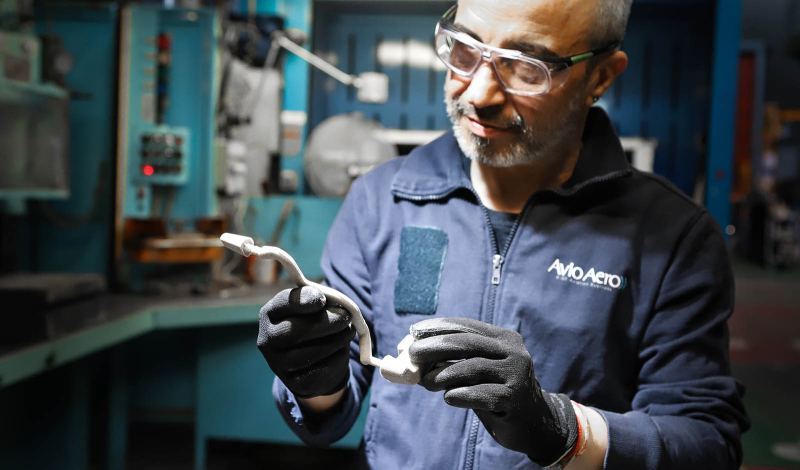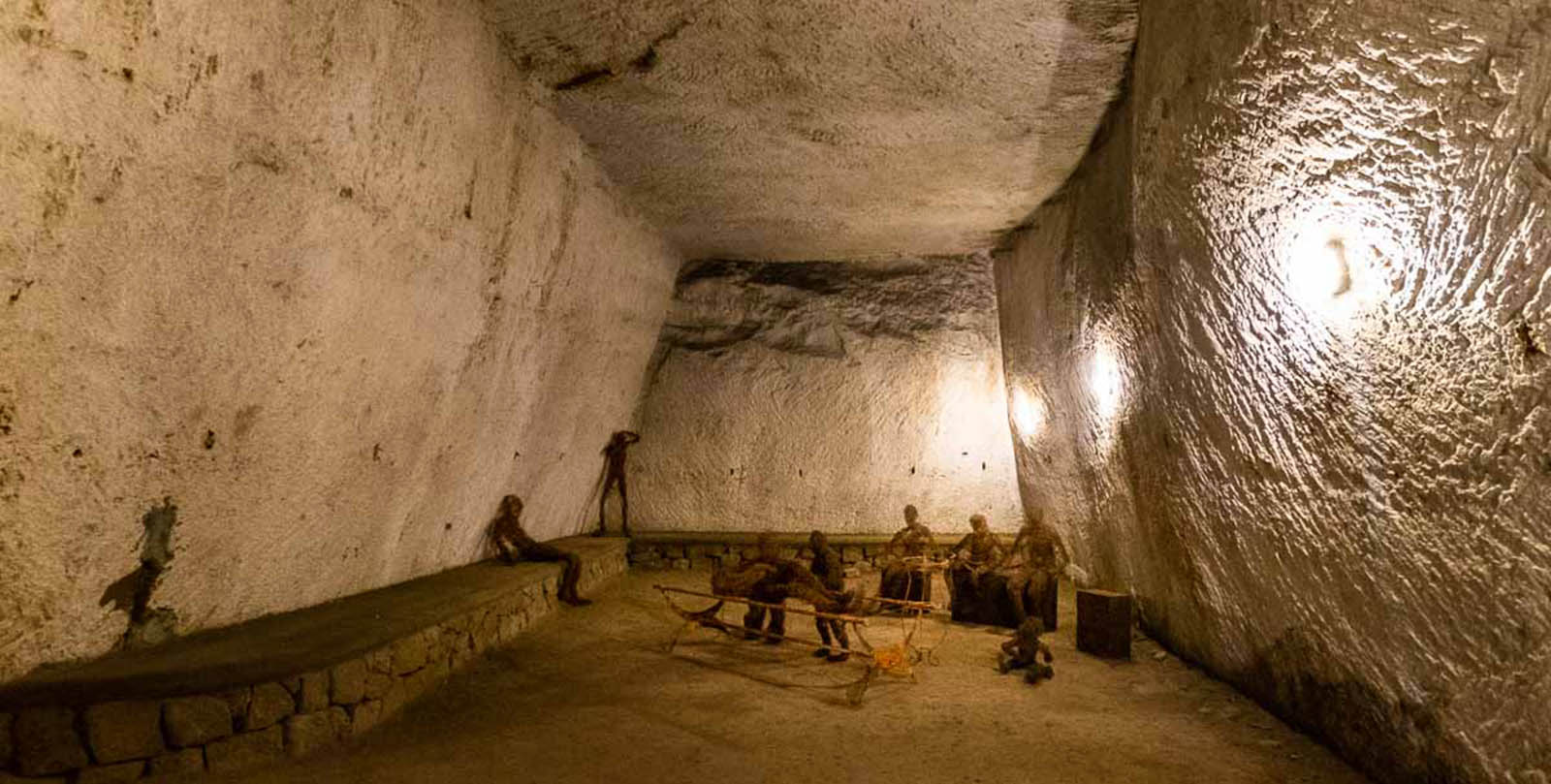Humans
The Factory's Artist
This skilled operator from the Borgaretto plant, a specialist in constructing large aircraft engine parts, has developed his outstanding artistic talent by reusing waste materials.
May 2023
If it is true that art and beauty can appear anywhere and at any time, it is no surprise to find a flourishing artistic talent in an industrial foundry: Avio Aero in Borgaretto. The plant constantly focuses on innovation and improvement within its specialist field: the construction of casings of accessory gearboxes or power transmissions for aircraft engines or helicopters.
Gerardo Rosato has been working in this factory since 1995 (from when it was Teksid Aluminium, and since it was taken over by Avio Aero in 2008), constructing sand cores and the particular ducts inside them. The cores are basically the molds into which magnesium, aluminum or other alloys are poured, to give shape and substance to casings that are often considerably large and heavy.
But Gerardo is also endowed with a purely artistic talent which, in some ways, also reflects and accompanies his proficiency on the workplace. He is a multifaceted artist, with a gift for transforming discarded and apparently worthless materials into real works of art: sculptures in iron wire, aluminum, sand and resins, as well as paintings.
By talking about him in the company, we were able to learn more about how Gerardo "brings his art to work". As the production managers explained: "we create all the ducts for the castings by building sand cores that are a mirror image of the final result. Some of these ducts can be very narrow with many twists and turns, and so require considerable manual skill and patience."
Gerardo's creations reflect his perception of reality and of the environment around him. So, the works he has displayed in galleries and exhibitions over the years have such names as "The Land of Fires" and "Exodus: from Dystopia to Utopia." We talked to him about this.
How did you get into art?
"I attended the artistic high school in Turin. Art has always been a part of me, and I often put it into practice through my installations."
How does your work encourage you creatively, and to what extent?
"I always begin with the idea of reusing elements and, because I work in a foundry, the waste materials around me often already have potentially creative shapes. My work really encourages me to recycle and to follow my imagination, making rough sketches for new works, sometimes with the help of my colleagues."
Which art form do you prefer, and why?
"I prefer using sculpture for my installations. Sand boasts a particular charm after being processed with and finished, and so does iron wire."
How would you describe your method of sculpture, and what materials do you use now?
"My works are installations rather than sculptures. I work a lot with iron wire and metal mesh to project three-dimensional shadows."
“Everything is art at Borgaretto, bins full of waste sand, or glittering scraps of aluminum in the strangest imaginable shapes, or colorful scraps of magnesium - everything inspires me to create something"
How much of your manual and artistic skill can also be found in the casting and modeling you do for the products made at Borgaretto, for example?
"We work with our hands at the Borgaretto site and every one of my colleagues is a master of his craft, working in what is really an art workshop rather than a factory. If you come to visit Borgaretto, you'll see the manual skills we all have. I've also taken inspiration from them, and shown my appreciation by reusing our waste materials and transforming them into artistic installations, ranging from lost-wax castings to sand sculptures."
To what extent is your artistic inspiration influenced by your industrial trade or, vice versa, how many of your ideas in the company are due to your talent or vocation?
“Everything is art at Borgaretto: bins full of waste sand, or glittering scraps of aluminum in the strangest imaginable shapes, or colorful scraps of magnesium - everything inspires me to create something. In the future, I'd like to photograph the hands of my colleagues at work, and put on a traveling exhibition for Avio Aero."
Have you brought any of your work into the company? When did this happen and how did it go?
"To celebrate my 25 years with the company, I created the work “Metal Flows in our Veins”. It's an installation made of iron wire and it is displayed at the entrance. It depicts two life-size men with ladles and crucible who are welcoming visitors, and indicates that our company is a foundry, that we “have metal in our veins” and that “our souls (or cores)” are in the flying engines. For our Open Day, for example, we organized a little exhibition for my colleagues' children with sand sculptures, aluminum castings, and shadow play using metal mesh. We explained our ways of working and let them touch the various materials - it was fantastic to interact with them. For Women's Day, I instead decided to pay homage to all the women working in our factory with a personalized aluminum flower: a rose with their names engraved on the stem. It's the thread that binds us all, because we are all united by the same thread, and I think that a small heartfelt gesture is worth more than a thousand words. Long live the women in blue overalls!"
You recently exhibited works as part of an urban initiative involving different forms of art. How did this go, and what reactions and feedback have you had?
"I made some large, permanent, iron installations for the Galleria Borbonica in Naples, depicting stories in the underground shelters where people hid during bombing raids. I also created two iron wire giants, which are at MAAM (Museo dell’Altro e dell’Altrove di Metropoliz) in Rome, and I made a flock of iron wire birds for the Koepenick prison in Berlin, which are shown flying out of a cell and swarming through the building. The exhibitions provide me with many new experiences: meeting other artists and establishing new collaborations, talking to visitors, and seeing their amazement as they look at my works. It's wonderful."
What sort of artistic works or initiatives do you have in mind for the future?
"I bought a house with an inner courtyard, where I’ve been living for the past two years and where I organize exhibitions. It's called Casa Museo Zona Rosato and is located at 84 Via Exilles in Turin. Over these past 2 years, I've organized twenty exhibitions of contemporary art. My house is also always open to the public for the 'April Festival' that has just ended, during which seven houses in Turin opened up to the public with performances, music, theater, poetry, videos and art. Maybe I set a precedent, or maybe not. Nonetheless, my future is all about expanding art. Next to my house, there's an old ‘Agnelleria’ where we can help promote new and emerging artists. It's a very evocative place with pink marble walls, and we've just opened it with an exhibition called “Stories of Specters and Ghosts”, by Turi Rapisarda and Simona Galeotti. I lead a double life as a worker and an artist but, when I put on my blue overalls, I become a foundry artist and take pride in what I do."







